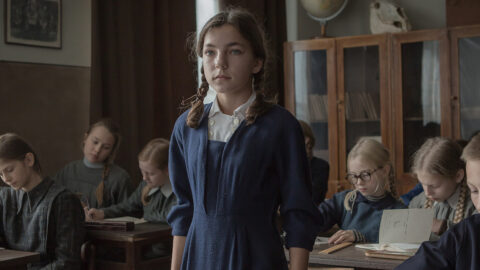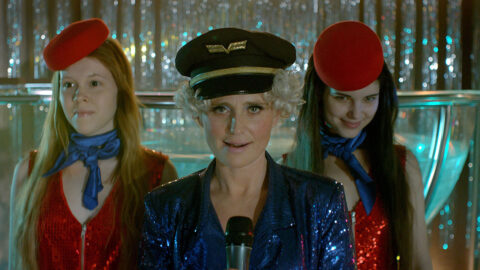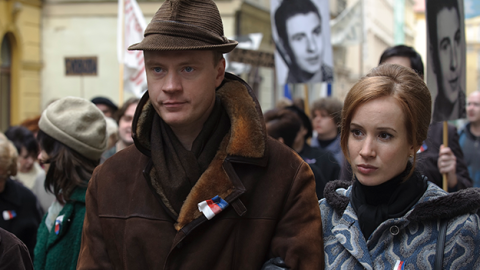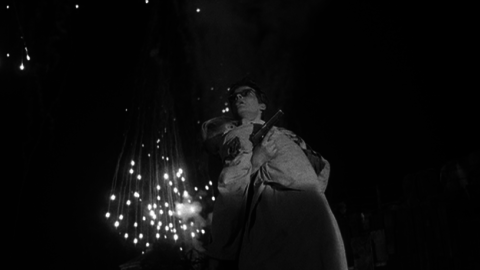By Amy Taubin in the March-April 2018 Issue
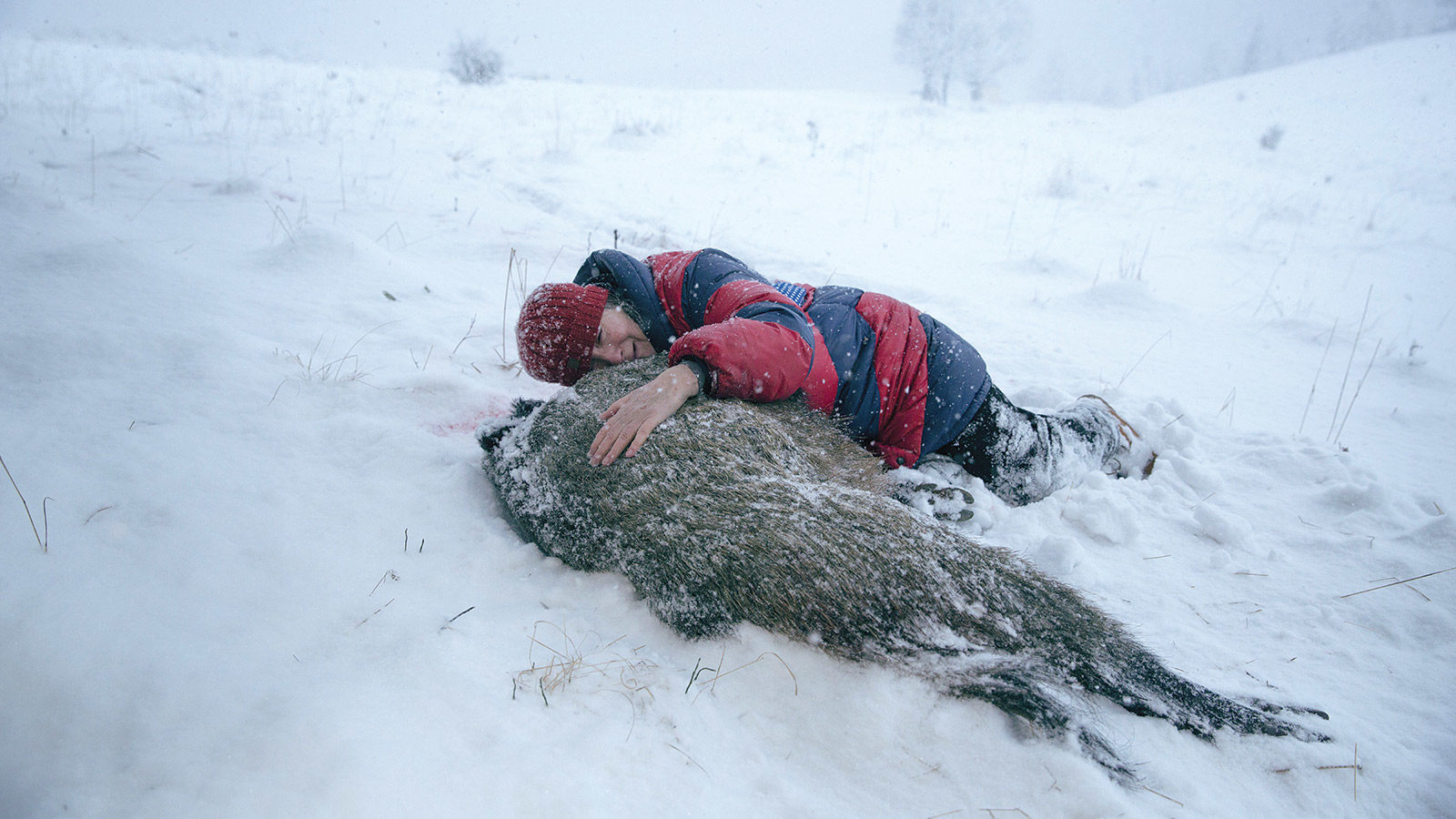
Mother Earth
An unclassifiable, unflinching eco-mystery, Agnieszka Holland’s Spoor shows off the pioneering Pole’s stylistic verve—and nerves of steel
Spoor, the English title of the 2017 film directed by Agnieszka Holland in association with Kasia Adamik, refers to the trail left by an animal that hunters use to track it down. Pokot, the Polish title, is a hunting term for the count of the day’s kills. In the course of Holland’s film—her most magnificent work—the hunters become the hunted. Three of them are brutally killed. I cheered their deaths. They deserved no better.
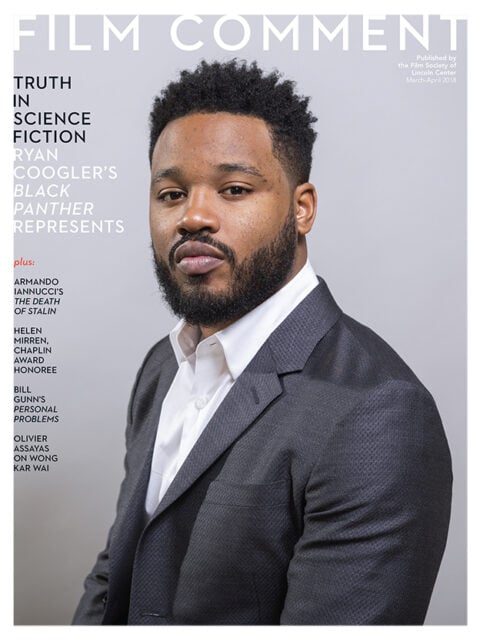
From the March-April 2018 Issue
Also in this issue
At the New York Film Festival last fall, Holland described Spoor as “an anarchistic, feminist, ecological crime story with elements of black comedy and magic realism.” She noted that four years ago when she and novelist Olga Tokarczuk began adapting the latter’s novel, Drive Your Plough Over the Bones of the Dead, they did not consider the narrative explicitly political. But times have changed. Or rather, seesawed. Whether dressed up as communism or capitalism, and despite brief swings toward liberalism, patriarchy—the authoritarian rule of white men as institutionalized by church, state, and family—prevails. When Spoor premiered at the 2017 Berlin Film Festival, where it won a Silver Bear (the Alfred Bauer prize), a correspondent for Poland’s state media outlet wrote that Holland “had made a pagan film promoting ecoterrorism.” She and Tokarczuk had already been branded targowiczanin, the vernacular Polish term for traitor, revived from the communist era. With an irony honed during 50 years of fielding such attacks, Holland told an interviewer that it might be advantageous to put the “pagan ecoterrorist” description on the poster for Spoor because it would attract an audience that otherwise wouldn’t go to the movies.
Gallows humor aside, the attack on the film evokes memories of 1981, when A Woman Alone, one of Holland’s early features, was banned in Poland and the director was forced into exile in Western Europe. Martial law had been imposed after a period of liberalization. A Woman Alone depicts in grim detail the poverty and neglect experienced by a single mother who carries mail sacks nearly as heavy as she is, and how exploitation, under the rule of the proletariat, became the sanctioned form of human relations. J. Hoberman, who in 2013 still counted the film as Holland’s masterpiece, described it as “a stunning evocation of ignorance, superstition, poverty and disorder that attacks virtually every institution in communist Poland while suggesting a stratum of society impervious to reform.” A Woman Alone was shown in the 1987 edition of New Directors/New Films, but it has been virtually unavailable ever since, although when Huub Bals was head of the Rotterdam Film Festival, he borrowed a 16mm print from Polish television and is said to have made a copy for its director’s private use.
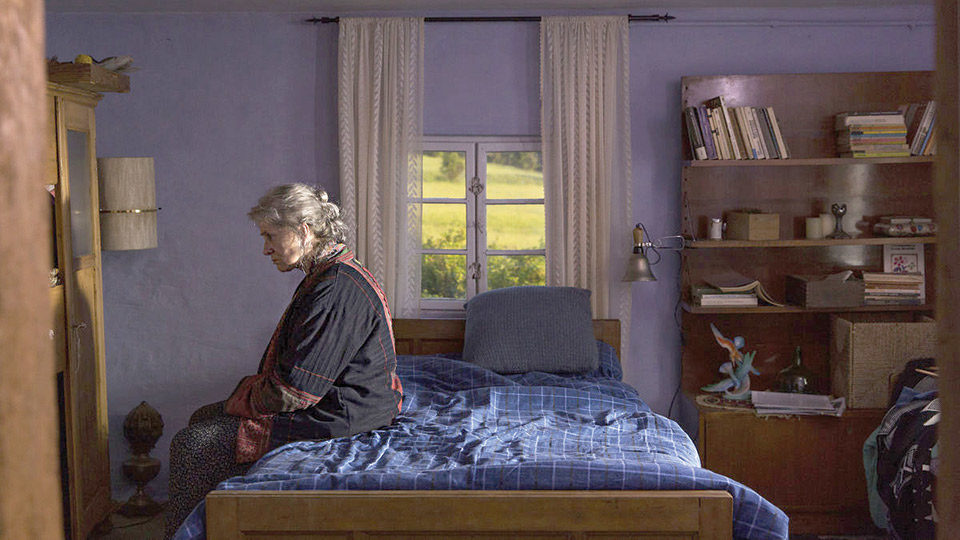
Holland’s career took off in Western Europe with the multi-award-winning Europa, Europa (1990), but it was the first film she made in exile, Angry Harvest (1985), that rivals A Woman Alone as an exposé of how institutionalized misogyny is a foundation of church and state, inseparable from class and ethnic hatreds. The film that began Holland’s American career (for 20 years she has been largely based in Los Angeles and works both in television and movies) was The Secret Garden (1993), an adaptation of Frances Hodgson Burnett’s classic children’s novel. It may be the most optimistic of her films, although Mary, its heroine, is a lonely, orphaned, albeit economically privileged, pre-adolescent girl who shows every sign of turning into a “difficult” woman until she is transformed by becoming a guardian of the natural world. In this, The Secret Garden prefigures the mission of Spoor’s protagonist Janina Duszejko, and also—major spoiler—Spoor’s dreamlike utopian ending.
Spoor is set in a small polish village in one of Europe’s last primeval forests. On the border of Poland and the Czech Republic, the forest is a point of contention between the European Union, which has made laws to preserve it, and Poland’s right-wing government, which is exploiting its resources by ignoring all regulations, particularly around hunting and logging. A retired civil engineer in her late middle years, Duszejko (Agnieszka Mandat) lives alone, supplementing her pension by teaching English in the local school. Highly educated, she prefers astrology to organized religion and is a dedicated animal activist. Since hunting is the principal sport and moneymaking occupation of the village, she is in conflict with its power structure—the mayor, the police chief and his underlings, the priest, and the business owners—a corrupt bunch, who in addition to their illegal hunting are involved in prostitution and gambling rings, and who consider it their God-given right to abuse women just as they decimate the environment.
When Duszejko’s two dogs go missing, she suspects they have been killed by hunters, and her grief fuels her anger. Then, one by one, the men who mock her for interfering with their pleasure, and who bond through killing, turn up dead in strange circumstances. Duszejko puts forward the theory that the animals are taking revenge, but eventually she falls under suspicion. Fortunately, she is not without allies. Indeed, two men are romantically involved with her. One is a visiting entomologist who becomes her lover; the other is her more shy neighbor, who has been traumatized by a family history that goes back to World War II. She also befriends a young woman who works for one of the “deplorables,” and the young man who’s in love with her—an IT whiz who fears for his job if it is discovered that he is epileptic.
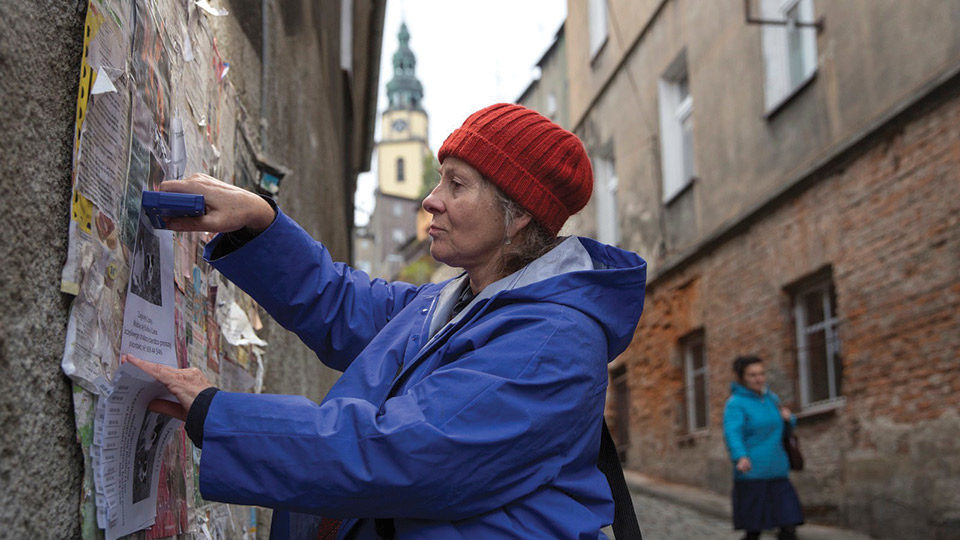
The film’s driving, often soaring camera moves (Jolanta Dylewska is one of the world’s great cinematographers and here she shares credit with another Holland veteran, Rafal Paradowski) and its dark, propulsive orchestral score are scaled to the majesty of the forest and to the passion of the woman who is its steward. To say that the point of view largely belongs to Duszejko would be to ignore how often we see the habitat through the eyes of the animals and birds that live and die there. At the New York Film Festival, when Adamik was asked about how she “assisted” Holland, who is also her mother, she said that her most time-consuming assignments were the animal shots. (No animals were killed during the making of the film; the images of the hunt combine pre-existing footage with CGI.) The narrative is divided into four acts, each corresponding to a season and to a calendar that lists which animals can be legally hunted and when.
Epic as the depiction of the natural world is, Spoor is also filled with scenes of great intimacy, some of them joyous, some of them heart-wrenching. The film’s emblematic image is of Duszejko, crouching over the body of a young wild boar that has been shot through the lungs, trying to give it comfort in its dying moments, but deserving equal weight is the scene in which she and the two men who love her sit around a campfire, smoking pot, laughing uproariously, and singing “The House of the Rising Sun.” And the delicacy of the moment where one of these men knocks on her door, carrying in his hand a gift of a few strawberries that he awkwardly crushes into his palm when he realizes that the entomologist has gotten to her bed first.
This rich experiential tapestry is possible not only because Holland is a virtuoso of cinematic expression but because she has partnered with an amazing actress who is as true when she explodes in rage as when she is transported by love. Noted for her theater work, Mandat has rarely appeared in movies. Holland had cast her in a small role in one of her earliest films, but she ended up cutting the storyline that Mandat was part of. That they are sharing this film some 40 years later is fitting: the richness of Spoor has a great deal to do with the way the history of the characters—their experience of the shifting political landscape of Poland, much of it barely articulated in dialogue but carried in their faces, gestures, and actions—dovetails with the real-life experience of the director and her actors.
A brilliant, passionate, risk-taking filmmaker, Holland has woven a genre mosaic that is at once a phantasmagorical murder mystery, a tender late-blooming love story, and a resistance and rescue thriller. Sprawling, wildly beautiful, emotionally enveloping, Spoor earns its vision of utopia. It would not be the most resonant and inspiring political film of the century if it did not give us hope.



